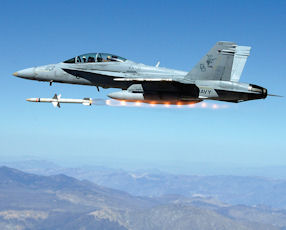The defense electronics systems division of Alliant Techsystems Inc. is expanding its San Fernando Valley operations as it prepares to go into full production on a missile that will bring it some $1 billion in revenue. The Arlington, Va.-based aerospace and defense contractor will lease 120,000 square feet in an industrial building in the 9400 block of Corbin Ave. in Northridge where it will build the Advanced Anti-Radiation Guided Missile. The company anticipates beginning the move by the end of the year or early 2014. Alliant Techsystems (ATK) currently has a smaller campus in the Warner Center area of Woodland Hills, with five buildings spread out on two separate locations on Burbank Boulevard and Califa Street. Those facilities, where about 250 employees work, are for research and development and manufacturing of weapon systems for the Pentagon. They will be consolidated into the new facility The company has been developing the guided missile since it received its first development contract in 2003. ATK has been in a low rate of production for about three years, making a couple of missiles a month.Then, in September, it received its first full production contract valued at $71 million. Bill Kasting, vice-president and general manager of the defense electronics systems division, said now that the Navy has decided to go into full production, ATK expects to receive $1 billion in revenue over a 10-year period “The Navy will award us a production contract on a yearly basis over the next three to four years until we peak out at a missile a day,” said Kasting, who did not specify whether the production will increase the size of ATK’s local workforce. The missiles will be delivered to the Navy and the Italian military. Nearly 14 feet in length, they reach a speed of Mach 2 and have a range of 60 miles. They are used against stationary and mobile enemy air defense systems. ATK will install the front-end electronics at its new Valley location. The rocket motor and live explosives are added later at Naval Air Weapons Station China Lake near Death Valley, Kasting said. The defense electronics systems division also has facilities in Texas and Florida. ATK is a global company with divisions serving the aerospace and defense industries, sport-shooting and law enforcement. Earnings fell 16 percent to $262 million in its last fiscal year ended March 2012. Revenue fell 4 percent to $4.6 billion. Like other companies supplying to the Pentagon, ATK faces uncertainty with its programs under development and in production due to $500 billion in defense cuts that could take effect on March 1 unless Congress takes action to put them off. The cuts would extend over a 10-year period. The guided missile program, however, could be safe if funding levels established in the current federal budget remain unchanged, said Michael Ciarmoli, an analyst with Keybanc Capital Markets in suburban Philadelphia who follows ATK and other big defense contractors. The guided missile program is slated to receive $94 million in 2013, $120 million in 2014 and $130 million in 2015, with ATK getting a share of those funds. “In this environment when you win programs with increases in funding that is (where) you want to be,” Ciarmoli said. The missile is an upgrade to the Navy AGM-88 high speed anti-radiation missile. It is launched from the FA-18 Hornet fighter and the EA-18G Growler electronic warfare jet – both carrier based – and the European Tornado ECR fighter jet used by the Italian Air Force. Since ATK received its first development contract 10 years ago, it has focused getting the missile system certified by the Navy and into production. Chief Executive Mark DeYoung told analysts in a November conference call that the decision by the Navy to go into full production will be a boost to earnings. “That’s going to create some additional booking momentum for us,” DeYoung said. “That’s a long-term program that has the potential for $1 billion in the budget.” The company is also finding increased business in commercial aerospace. In October, ATK received a contract from European aircraft manufacturer Airbus SAS to supply composite parts and other services for the A350 long-range aircraft that is a competitor to Boeing Co.’s 777 and troubled 787 Dreamliner. Ciarmoli noted that other ATK programs, including precision weapons and the next generation munitions, are priorities for the Pentagon and unlikely cost cutting targets. “(The company) is looking to position themselves in the more growth markets and looking at their portfolio of what works and what does not work,” he said. Consolidating the Valley facilities into a single location could be ATK’s way of optimizing their footprint and workforce to deal with lower levels of budgetary funding, he added. However, company officials say their decision to consolidate into the larger Northridge building began in the past year in anticipation of the growing missile business – and to operate more efficiently. It has leased the new building for 10 years. “Having labs in one building and manufacturing in another – and having to move hardware between the two – it is not the best approach if you are doing a missile a day,” Kasting said. The building at 9401 Corbin was built in 1981 and had been used by Washington Mutual Bank until that financial institution went out of business in 2008. In 2011, the building sold for $4.5 million when acquired by Oakfield Realty Partners LLC in Los Angeles from Alliance Commercial Partners LLC of Lakewood, Colo. The building has been gutted and improvements are being made to ATK specifications. Office cubicles will be brought in and lab and manufacturing space built. A two-story building is a big change for the defense electronics systems division that now operates out of five buildings. “It is not conducive to having a lean working environment,” Kasting said.
